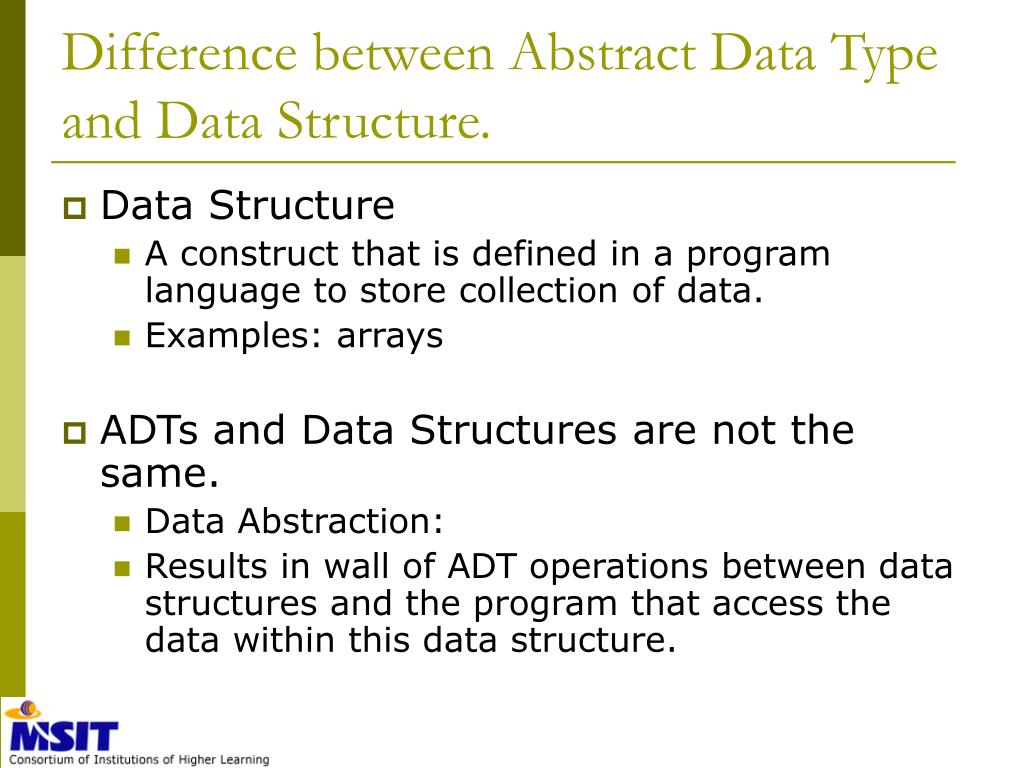
Abstract Data Types (ADTs) and data structures are related concepts, but they serve different purposes in the context of computer science and programming.
Here are the key Differences between ADT and Data Structures:
Abstraction vs. Implementation:
Level of Detail:
Programming Language Independence:
Usage:
Examples:
In summary, ADTs provide a conceptual framework for thinking about and specifying data structures in a way that abstracts away the underlying implementation details. Data structures, on the other hand, are the concrete implementations of these abstract concepts, defining how data is physically stored and accessed in a program. Both concepts are crucial in software development, with ADTs guiding the design and expectations, and data structures handling the actual data management and manipulation.
Thank you.